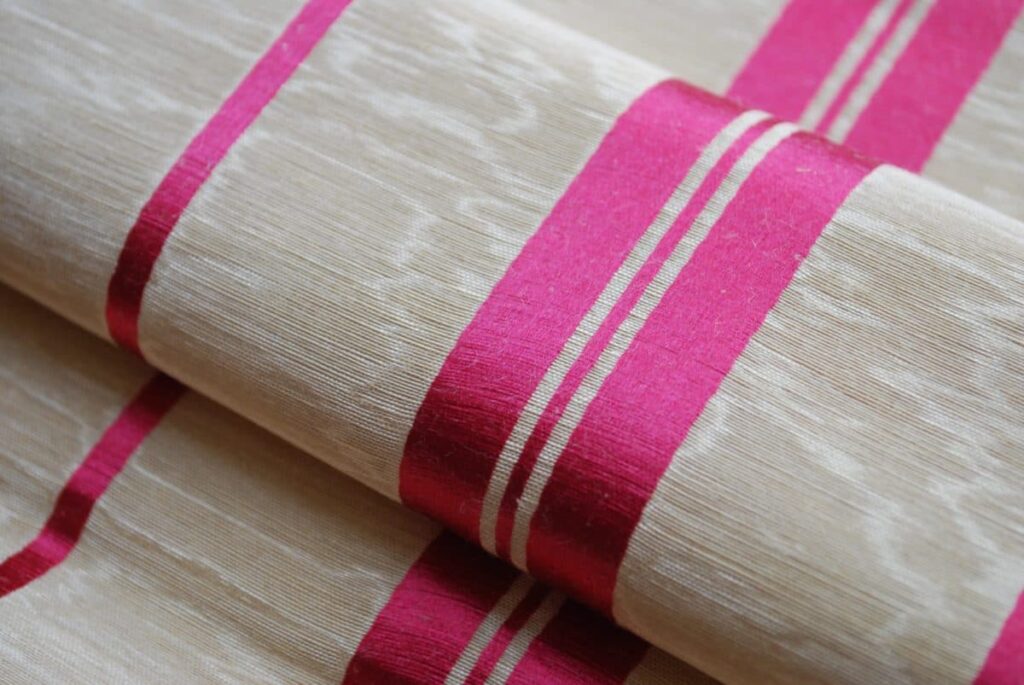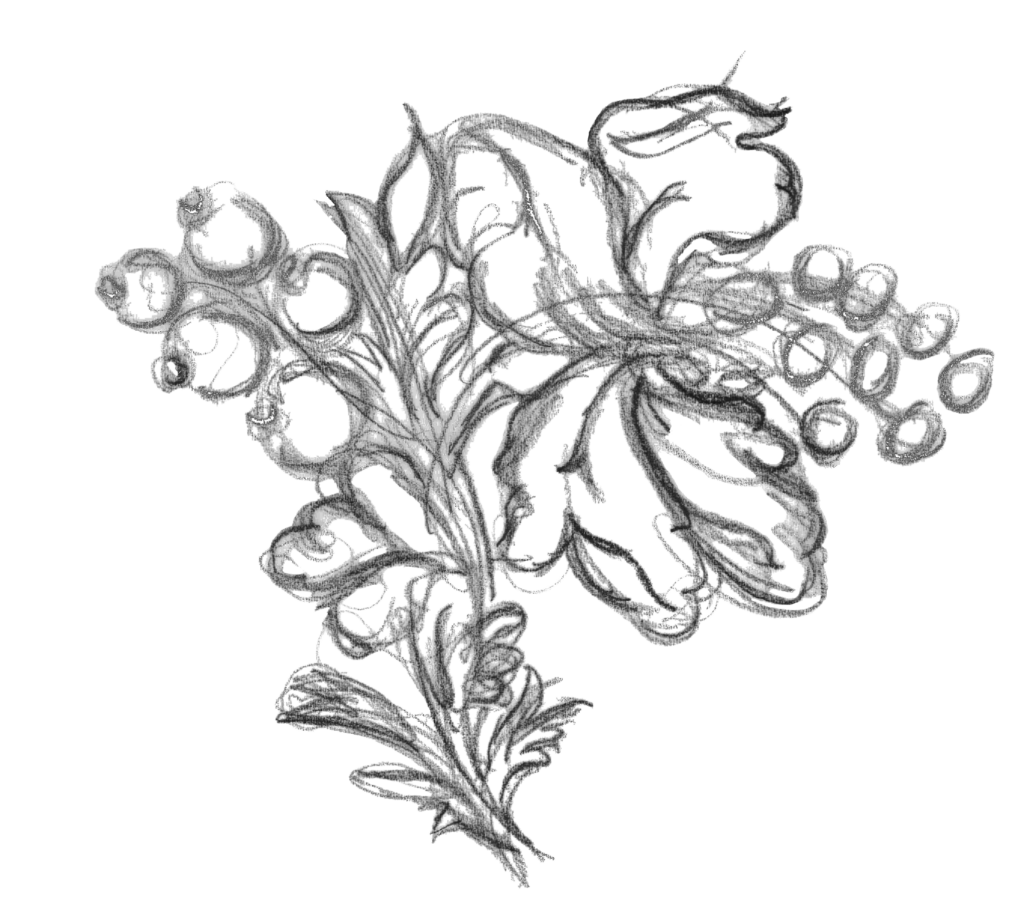Changing fashions and techniques in striped fabric.
The weaving of striped fabrics would for the novice seems to be quite straight forward, that by changing the colour of vertical (warp) threads you can achieve a striped cloth.
Over the years Humphries Weaving have designed and woven hundreds of striped fabrics, in all different shapes and sizes. However, sometimes striping in cloth was achieved through uneven spinning or dyeing, created trough the limitations of techniques and equipment. In true plains or plain stripes this would be undesirable but today can often be coveted in replication.
Explore our stripe gallery
Self –colour stripes with alternating structures are a furnishing fashion which appears in the late 18th Century and through the first quarter of the 19th Century. Damask stripes gave a good contrast in satin and sateen weaves with the matt weft effect of the sateen contrasting greatly with the smooth shiny satin of the warp. In the this period we can see the introduction of Taboret stripes in which a tabby weave(plain) is introduced as an alternative to the sateen to create more interest. This simple effect greatly increases the complicity of the structure.
To add an additional feature the fabric is moiré finished, creating a watered effect which is embossing the surface. The water effect was an uncontrolled design which gave fascinating textures across the surface of the cloth. The interest in stripes is that the effect can only work on a tabby structure so that the alternating stripes of satin remain unchanged in the process.
Images: Apsley House Watered Taboret Stripes (L) Yellow Room (R) Crimson Room
This technique in the process of creating the cloth is an added complication that required skill in both weaving and finishing. There are two examples of taboret stripe at Apsley House No1 London, the home of the Duke of Wellington. In the restoration of the Yellow Room all traces of the original were thought lost until by chance a small cutting on a chair gave clues to the layout and shade of yellow. Despite being 200 years old the document still bore the water marking of the finishing process. The crimson room features a two tone version in the same layout with the watering in the straw coloured alternating stripes.
The width of stripes also changed with fashion and extra-large layouts in furnishings in a vivid yellow can be seen at Hughenden Manor in Buckinghamshire. This bold stripe in a self-colour in plain tabby and satin relies on the contrast of weave structures alone between the plain and satin textures, to create the status demanded by the design of the furniture. Perhaps it is because of the regimented layout of stripes that the contrast works so well with the curves and shaped frames that bear the upholstery.
Image: Hughenden Manor Stripe
Click here to view our Gallery of Striped Fabrics or you can explore Our Services.
You can also see more images of our striped fabric on our Instagram page, click here to view it.













